You are asked to configure telemetry on the OFX Series devices in your data center fabric. You want to use sensors that have a vendor-neutral data model Which type of sensor should you use in this scenario?
What are two ways in which an EVPN-signaled VXLAN is different from a multicast-signaled VXLAN? (Choose two.)
Exhibit.
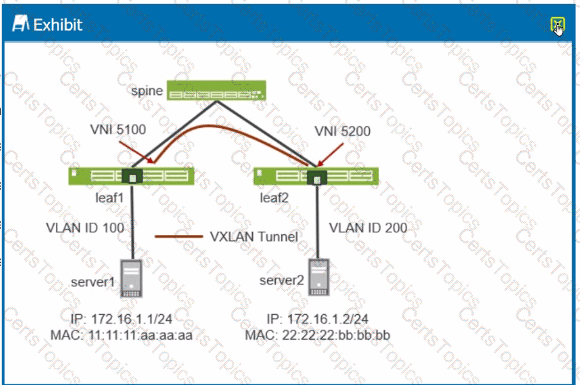
A VXLAN tunnel has been created between leaf1 and Ieaf2 in your data center. Referring to the exhibit, which statement is correct?
You are asked to deploy 100 QFX Series devices using ZTP Each OFX5120 requires a different configuration. In this scenario, what are two components that you would configure on the DHCP server? (Choose two.)
Exhibit.
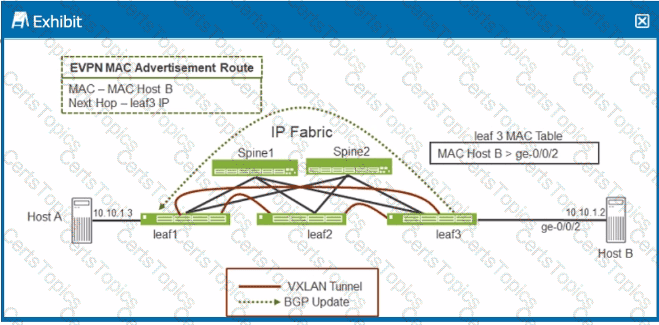
Referring to the exhibit, when Host A sends an ARP request for Host B's IP address, which Junos feature does leaf1 require to send an ARP response back to Host A without having to send a broadcast frame over the fabric?
You are asked to build redundant gateways in your EVPN-VXLAN environment, but you must conserve address space because these gateways must span across seven PES. What should you implement on the PEs lo satisfy these requirements?
Which two statements are true about EVPN routes for Data Center Interconnect? (Choose two.)
You are asked to interconnect Iwo data centers using a method that provides EVPN Type 2 connectivity, is highly scalable, and limits VXLAN tunnels between border leaf devices. What will satisfy these requirements?
Exhibit.
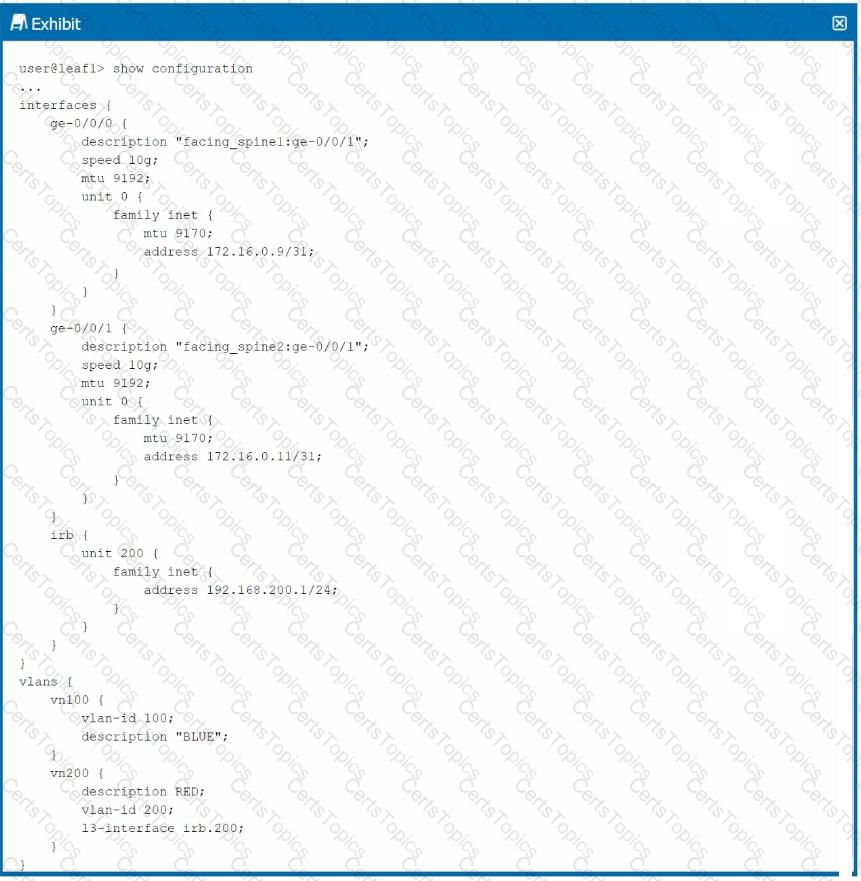
Host A is connected to vlan 100 on lead. Host B is connected to vlan 200 on leaf1. Host A and Host B ate unable to communicate. You have reviewed the touting and your hosts have the correct default route (.1)
Referring to the exhibit, which two commands will solve the problem? (Choose two.)
Which three statements are correct about VXLAN control planes? (Choose three.)
A local VTEP has two ECMP paths to a remote VTEP
Which two statements are correct when load balancing is enabled in this scenario? (Choose two.)
Exhibit.
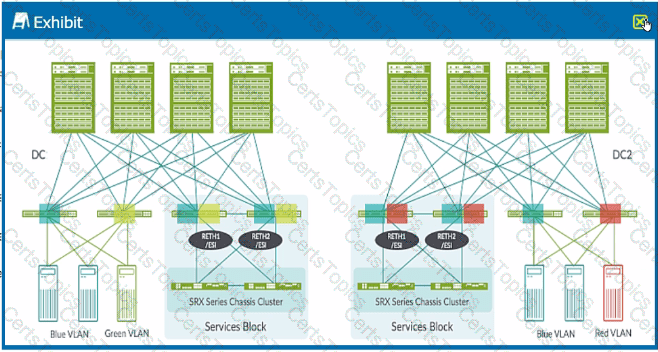
Both DC and DC2 ate using EVPN-VXLAN technology deployed using an ERB architecture. A server on the Red VLAN must communicate with a server on the Green VLAN. The Blue VLAN in DC and DC2 needs to be the same VLAN.
Which statement is correct in this scenario?
Exhibit.
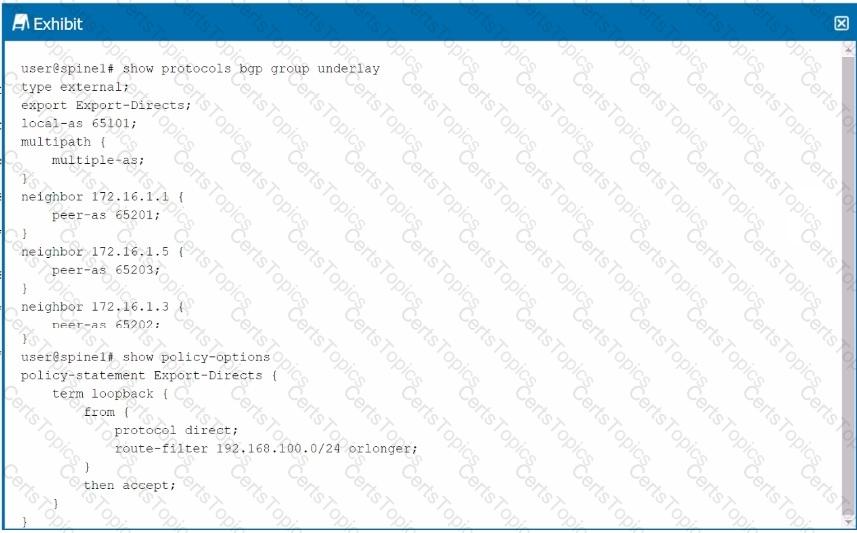
Referring to the exhibit, the spinel device has an underlay BGP group that is configured to peer with its neighbors' directly connected interfaces. Which two statements are true in this scenario? (Choose two.)
Exhibit.
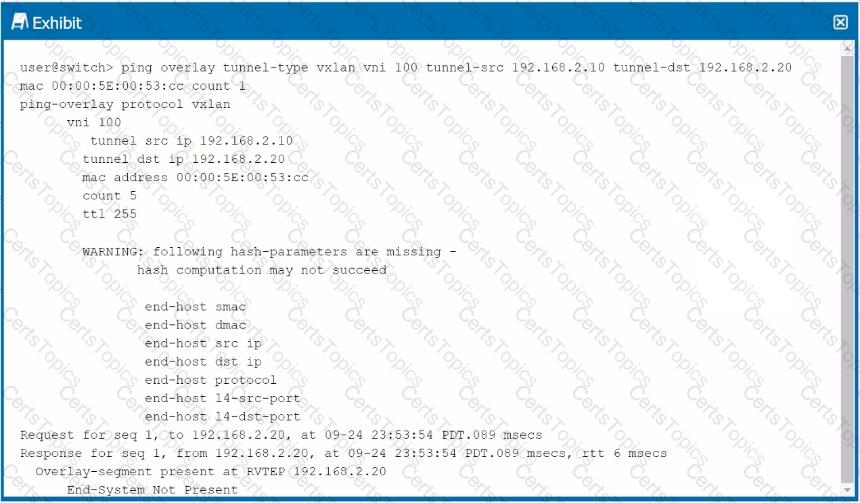
Referring to the exhibit, which statement is correct?
Exhibit.
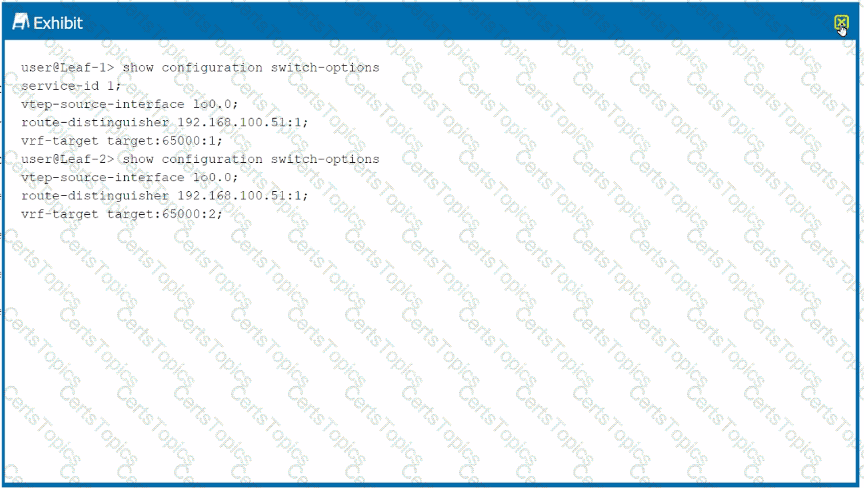
Connections between hosts connected to Leaf-1 and Leaf-2 are not working correctly.
What are two supported methods (or exporting data when using the Junos telemetry interface? (Choose two.)
You are implementing seamless stitching between two data centers and have a proposed configuration for a border leaf device.
In this scenario, which two statements are correct? {Choose two.)
You are deploying an EVPN-VXLAN overlay. You must ensure that Layer 3 routing happens on the spine devices. In this scenario, which deployment architecture should you use?
You are asked to interconnect two of your company's data centers across the IP backbone. Both data centers have their own unique IP space and do not require any bridging. In this scenario, which two actions would accomplish this task? (Choose two.)